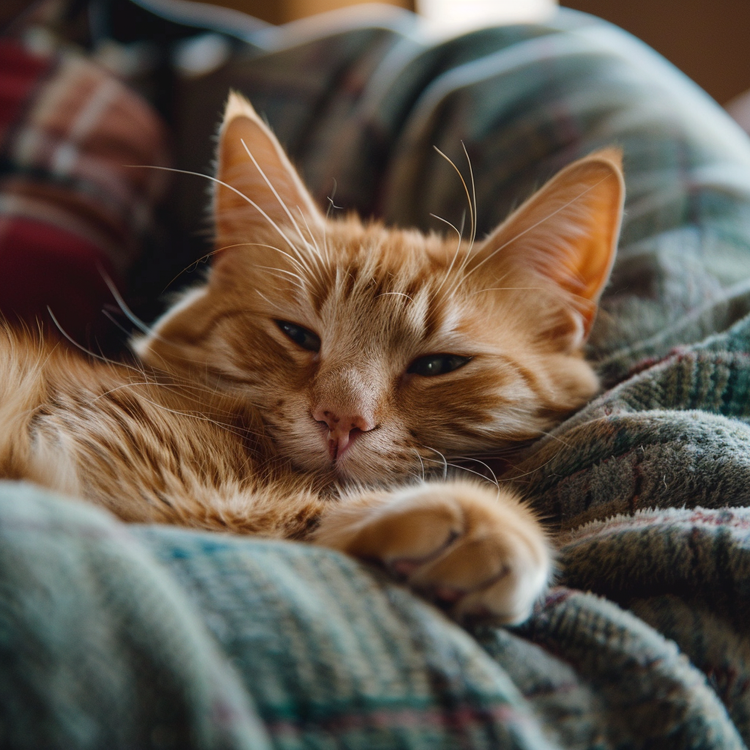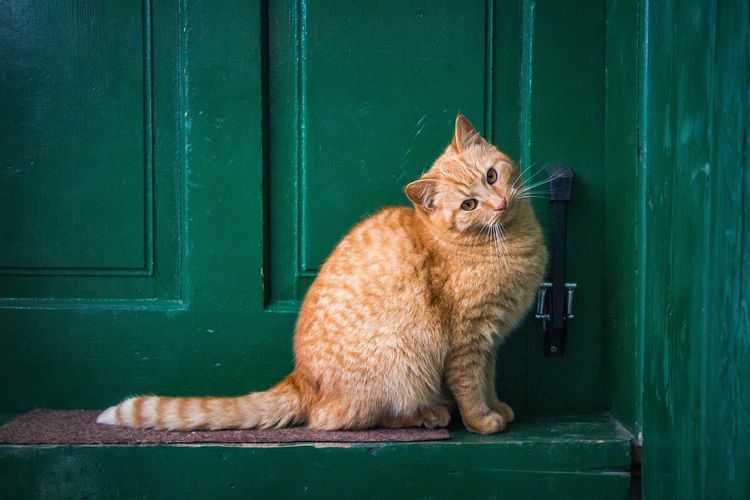Cat Sleep Patterns: Understanding and Optimizing Rest
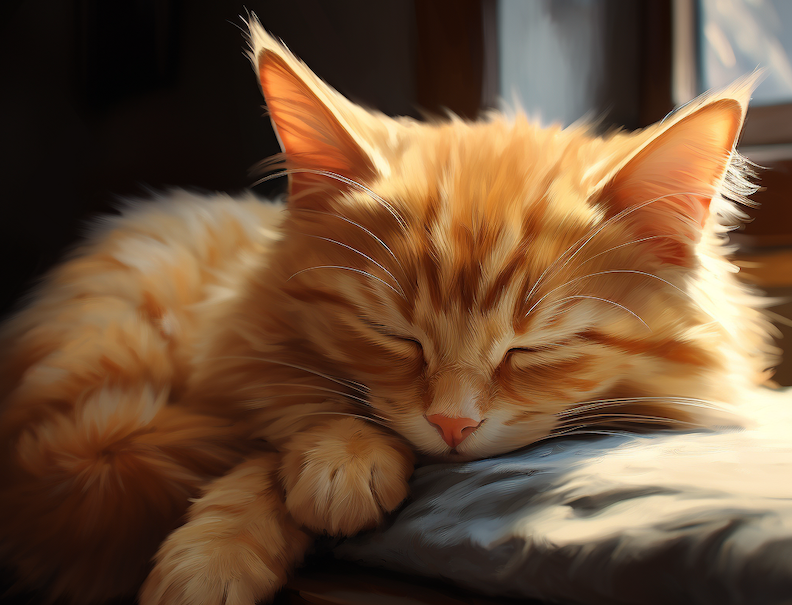
Cats are known for their enigmatic personalities and unique behaviors, with sleep being a significant and intriguing aspect of their daily lives. Understanding cat sleep patterns is not just a matter of curiosity for cat owners and enthusiasts; it's essential for the wellbeing and health of our feline friends. Cats have a distinct sleep-wake cycle that differs vastly from humans, making it fascinating to explore how they rest and rejuvenate. This exploration into the world of cat napping isn't just about counting the hours they snooze; it's about delving into the quality, patterns, and peculiarities of their sleep. By comprehending and optimizing these patterns, we can ensure our cats lead healthier, happier lives. This blog aims to unravel the mysteries of cat sleep, shedding light on what happens when your furry companion curls up for their next catnap. Join us as we dive into the captivating world of cat sleep, a key to unlocking the secrets of their overall health and contentment.
Understanding Cat Sleep Cycles
Cats, unlike humans, experience sleep cycles that are a marvel of the animal kingdom. While we humans are used to the conventional pattern of long, uninterrupted nightly slumber, our feline companions follow a more fragmented and versatile sleep routine. This distinction is crucial in understanding the unique needs of cats. A cat’s sleep is typically polyphasic, meaning they have multiple periods of rest throughout a 24-hour cycle, contrasting sharply with the monophasic sleep pattern of humans.
Diving deeper into these cycles, cat sleep is composed of both Rapid Eye Movement (REM) and non-REM phases. The REM phase, often associated with dreaming in humans, is where cats are believed to process and consolidate their day-to-day experiences. However, a significant portion of their sleep is in the non-REM phase, characterized by a deeper, more restorative kind of rest.
NREM Sleep
NREM (Non-Rapid Eye Movement) sleep is a deep, restful phase of cat slumber, constituting the bulk of their sleep cycle. In this stage, cats experience slower brain waves and reduced body activity, facilitating physical restoration and growth. Unlike the dream-rich REM phase, NREM is more about physical recuperation, making it crucial for a cat’s overall health and wellbeing. This phase is essential for energy conservation, muscle repair, and strengthening the immune system in cats.
REM Sleep
REM (Rapid Eye Movement) sleep in cats is a fascinating phase where most dreaming occurs. During REM, a cat's brain activity intensifies, mimicking an awake state, but muscle tone is significantly reduced, preventing movement. This stage is vital for mental processing and memory consolidation. Cats, though mostly immobile in REM, may show twitches or ear and whisker movements. This phase is critical for cognitive health, aiding in emotional regulation and memory formation.
On average, a cat spends about 12 to 16 hours sleeping each day, though this can vary widely depending on age and breed. Kittens and older cats tend to sleep more, embracing the comforting embrace of slumber for up to 20 hours a day. Certain breeds, like the lazy Maine Coon or the energetic Siamese, also show distinct sleep patterns, reflecting their unique genetic and behavioral makeup.
Quick and Simple Explaination:
- Cats exhibit a varied sleep routine compared to humans, often having several rest periods in a day instead of one long sleep.
- Their sleep is polyphasic, meaning they take multiple naps in 24 hours, unlike humans' single, extended sleep period.
- Cat sleep includes both REM (Rapid Eye Movement) and non-REM stages. The REM stage is thought to be when cats process daily experiences.
- A larger part of their sleep is non-REM, providing deep and restful sleep.
- Typically, cats sleep for 12 to 16 hours a day, with variations based on their age and breed.
- Kittens and senior cats often sleep up to 20 hours, while different breeds like Maine Coons and Siamese have their unique sleep habits.
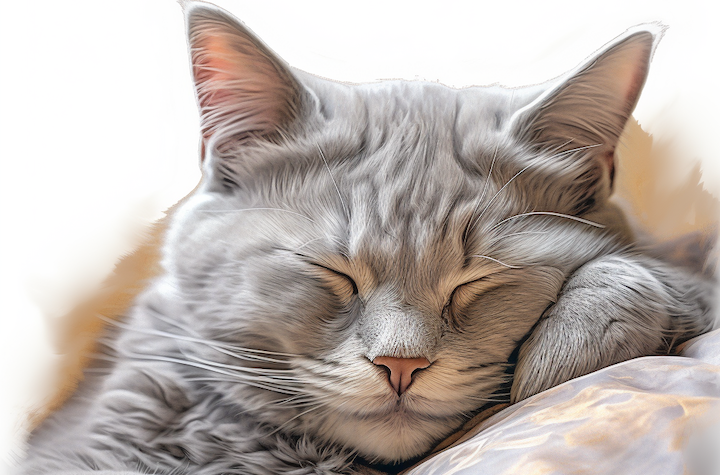
Factors Influencing Cat Sleep
The intricate tapestry of cat sleep patterns is woven from various threads, chief among them being age, health, and environment. These factors play pivotal roles in shaping how our feline companions rest and rejuvenate. Age is a significant determinant; as cats mature from the boundless energy of kittenhood to the more sedate pace of their senior years, their sleep patterns evolve accordingly. While kittens might engage in short bursts of sleep interspersed with high-energy play, older cats often indulge in longer, more frequent naps.
Health is another crucial factor. A cat in prime health typically has a stable and regular sleep pattern. However, any deviation in health, be it stress, illness, or physical discomfort, can lead to noticeable changes in their sleeping habits. Alertness to these changes can be vital for early detection of health issues.
Lastly, the environment plays an understated yet critical role. Cats are instinctual creatures, and their natural predatory instincts influence their sleep. A safe, quiet, and comfortable environment can promote more consistent and peaceful sleep patterns, whereas a chaotic or stressful environment might lead to irregular and disrupted sleep.
Quick and Simple Explaination:
- The key elements shaping cat sleep patterns include age, health, and the surrounding environment.
- Age impacts sleep: young kittens have sporadic sleep mixed with play, while older cats tend to have longer, more frequent naps.
- The health status of a cat directly affects its sleep. Healthy cats usually have consistent sleep patterns, whereas illness, stress, or discomfort can disrupt their sleep.
- Environmental factors are also crucial. Cats' sleep is influenced by their natural instincts; they prefer environments that are safe, quiet, and cozy.
- Disturbances in their environment, such as noise or discomfort, can result in uneven and interrupted sleep patterns.
Common Cat Sleep Behaviors Explained
Cats exhibit a variety of sleep behaviors that are not only charming but also insightful indicators of their comfort and health. One of the most common is the classic curl-up — a cozy position that conserves body heat and offers a sense of security. When a cat curls into a tight ball, it's often a sign they're seeking warmth or protection, a behavior rooted in their wild ancestry.
Another endearing behavior is when cats cover their faces while sleeping, typically using a paw or curling into their tail. This adorable posture can be a protective measure to shield their face, the most vulnerable part of their body while they're asleep. It's also a sign of deep relaxation, indicating they feel safe and content in their environment.
Sleeping in high places is another trait many cat owners observe. This behavior taps into their instinctual need to stay safe from predators and survey their territory. A cat perched atop a shelf or cat tree while napping is fulfilling its natural desire for security and a good vantage point.
These behaviors, varying from cat to cat, are more than just quirks; they offer a window into understanding a cat’s sense of safety, health, and well-being.
Quick and Simple Explaination:
- Cats display various sleep behaviors that reflect their comfort level and health status.
- A frequent behavior is the 'curl-up,' where cats roll into a ball. This not only keeps them warm but also offers a sense of safety, a habit linked to their ancestral instincts.
- Cats often cover their faces while sleeping with a paw or tail, which serves as a protective gesture for their vulnerable facial area. It's also a sign they're feeling relaxed and secure in their surroundings.
- Preferring to sleep in elevated areas is a common trait observed in cats. This aligns with their instinct to stay out of harm's way and monitor their environment from a safe height.
- These varied behaviors provide insights into a cat's perception of safety and overall health and well-being, differing from one cat to another.
Signs of Sleep Issues in Cats
Recognizing the signs of sleep issues in cats is crucial for their health and wellbeing. While cats naturally sleep more than most animals, excessive sleep can sometimes be a red flag. If your cat is sleeping more than the typical 12-16 hours per day, especially if this change is sudden, it could indicate underlying health issues such as depression, diabetes, or hypothyroidism.
On the flip side, insomnia or reduced sleep can also be a concern. Cats who are restless, unable to settle down, or who wake frequently during the night might be experiencing discomfort or pain. Changes in sleep patterns, like sleeping more during the day and staying awake at night, could also signal problems, particularly in older cats.
If you notice such changes in your cat's sleeping habits, especially if accompanied by other signs like changes in appetite, behavior, or weight, it's time to consult a veterinarian. Early detection and intervention can make a significant difference in addressing any potential health issues.
Quick and Simple Explaination:
- Monitoring cats for sleep-related issues is vital for their overall health.
- Over-sleeping, beyond the normal range of 12-16 hours, could be an indication of health problems such as depression or metabolic disorders.
- Conversely, signs of insomnia, like restlessness or frequent waking, may point to discomfort or health concerns.
- A shift in sleeping habits, such as increased daytime sleep and nighttime wakefulness, is particularly noteworthy in older cats and may suggest underlying issues.
- Observing any changes in sleeping patterns, especially when coupled with other behavioral or physical changes, warrants a vet consultation for early detection and treatment of health problems.
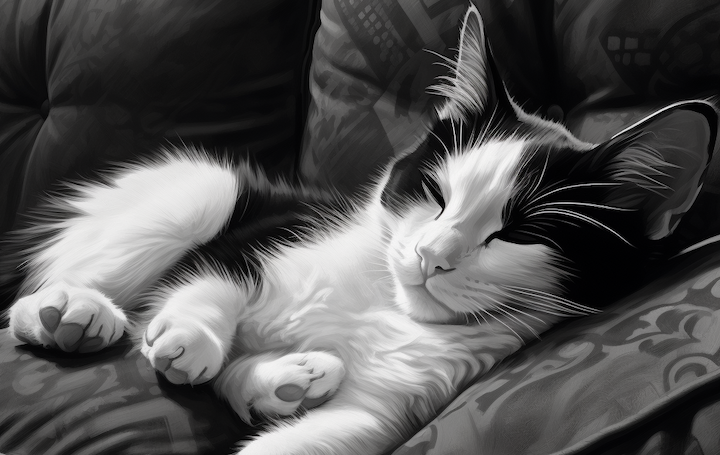
Tips for Optimizing Your Cat’s Sleep
Creating an ideal sleeping environment and routine for your cat is key to promoting healthy sleep patterns. Start by providing a comfortable and quiet sleeping area. Cats often prefer soft, warm bedding in a secure, undisturbed corner of your home. If you have multiple pets or a busy household, ensure your cat has a private space away from noise and activity.
Diet and exercise also play vital roles. A well-balanced diet tailored to your cat's age, health, and lifestyle can significantly impact their sleep quality. Avoid heavy meals right before bedtime, as they can lead to discomfort and restlessness. Regular play and activity are equally important. Engaging in interactive play sessions with your cat during the day can help expend their energy, leading to better sleep at night.
Lastly, establish a consistent routine. Cats are creatures of habit, and a regular sleep-wake schedule can greatly enhance their sleep quality. By incorporating these practical tips, you can create a nurturing environment that supports your cat's natural sleep patterns.
Quick and Simple Explaination:
- To enhance your cat's sleep quality, focus on creating a peaceful and comfortable sleep environment. Opt for a soft, cozy bed placed in a quiet and safe area of your home.
- Ensure your cat has its own tranquil space, especially important in households with multiple pets or frequent activity.
- The right diet is crucial for good sleep. Choose a balanced diet suitable for your cat's age and health condition, and avoid feeding them large meals close to bedtime to prevent discomfort and restlessness.
- Incorporate sufficient playtime and exercise into your cat's daily routine. Interactive and stimulating activities during the day help in expending their energy, contributing to a more restful sleep at night.
Final Thoughts:
In conclusion, understanding and optimizing your cat's sleep patterns is pivotal for their health and happiness. From recognizing the unique aspects of cat sleep cycles and behaviors to addressing factors that influence their rest, providing a conducive environment, and maintaining a healthy routine, every step contributes significantly. Embracing these insights ensures our beloved feline friends enjoy a life of comfort and contentment.
Frequently Asked Questions:
How much sleep do cats typically need each day?
Cats generally require about 12 to 16 hours of sleep daily. However, this can vary based on factors like age, breed, and overall health. Kittens and senior cats may sleep up to 20 hours a day.
Can a cat's sleeping habits change as they age?
Yes, a cat's sleep patterns can evolve with age. Young kittens often have irregular sleep interspersed with periods of play, while older cats might sleep longer and more frequently.
How can I tell if my cat is sleeping too much?
While cats naturally sleep a lot, excessive sleep, especially if sudden, might indicate health issues like depression, diabetes, or hypothyroidism. If concerned, consult a veterinarian.
Is it okay to wake my cat up if they're sleeping a lot?
It's generally best to let cats sleep undisturbed. If you're concerned about the amount of sleep, observe their overall behavior and consult a vet rather than frequently waking them.
Why do cats sometimes twitch or move in their sleep?
These movements are often seen during the REM (Rapid Eye Movement) phase of sleep, where dreaming occurs. Twitches can be a normal part of their sleep cycle.
Do certain cat breeds have unique sleep needs?
Yes, some breeds may have slightly different sleep patterns. For example, active breeds like Siamese may sleep less, while more laid-back breeds like Maine Coons might sleep more.
Can the weather or seasons affect how my cat sleeps?
Cats may sleep more in colder weather or during winter months. Similarly, hot weather can also lead to more lethargic behavior and increased sleep.
